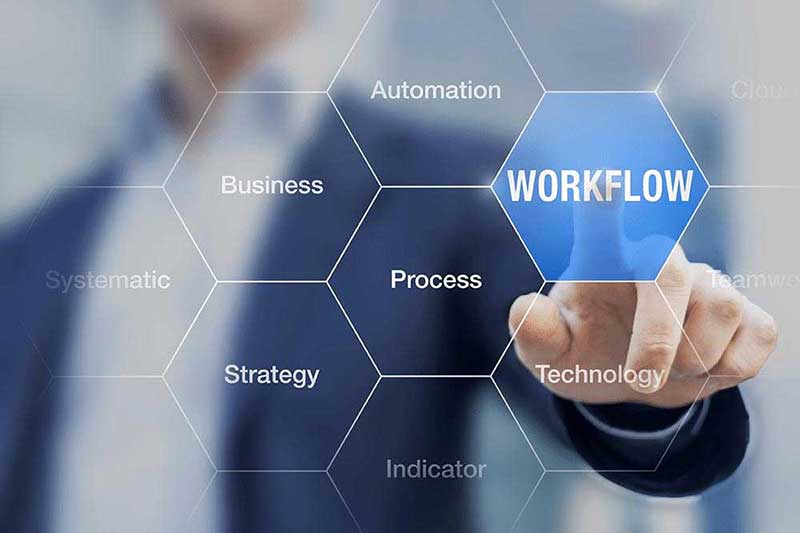With our POSSE PLS permitting and licensing software, you can easily automate workflows associated with building, planning, engineering, permitting, inspections, code enforcement, and other land management activities. This browser-based product will simplify workflows for your internal staff, external agencies, contractors, and citizens.
Permitting & Licensing Software
POSSE PLS permitting and licensing software includes workflows covering the core business areas of Planning, Permitting & Inspections, Business & Professional Licensing, Code Enforcement, and ePlans.

POSSE PLS’s Planning module links together all the pieces of planning projects (e.g., a large development project), so your planners can assess, evaluate, record, and retrieve all related information effectively.
The Permitting and Inspections module tracks all your permitting and inspection activity, from initial application to completion, renewal, or expiration.
Business & Professional Licensing →
Business and Contractor Licensing handles all licensing needs for your jurisdiction, including application, amendment, enforcement, and renewal activities.
The POSSE PLS Code Enforcement module allows agencies to investigate, review, and issue compliance actions from initial determination of violation to proceedings and final outcomes.
The POSSE ePlans module is a cutting-edge plan review solution that allows planners to review, markup, and compare changes between plan versions.
Simple report customizations which used to take days to implement now take minutes from a web browser anywhere in the world, with no client-side software required.
Leveraging Microsoft’s global Azure platform, your POSSE Cloud solution delivers 99.9% uptime with performance scaling and redundant load-balancing.
POSSE GIS enables the highest-level of ESRI-based GIS integration to allow jurisdictions to start, manage, track, route and investigate business-specific activities.
Equips government agencies to more effectively and efficiently manage inspector resources across diverse business areas.
POSSE Mobile technologies provide field workers with expedient in-the-field mobile computing based on their specific business needs.
POSSE WebUI gives non-technical business users the ability to easily create elegant and responsive customer service experiences, fully compatible for all mobile, tablet and desktop devices.
Powered by POSSE
On-demand reports, public & private cloud services, GIS integration, mobile apps, low code UI builders, and more! The POSSE Platform offers a comprehensive range of tools and resources to maximize the utility of your POSSE PLS enterprise software solution.

Buying a Permitting & Licensing Software System
For most government agencies, particularly those operating in highly regulated, public-safety-oriented domains, a single-tenant solution offers distinct advantages that should be considered by agencies seeking to accurately quantify both the immediate and lifetime benefits of a dedicated and highly configurable environment.

Establishing a Generational Platform →
How to best evaluate a vendor’s product offering and service model to ascertain longterm partner stability and project viability.
Projecting Lifetime Cost of Ownership →
The vast majority of government enterprise software implementations reside in the realm of medium to reasonably complex project requirements where the COTS+ solution value proposition truly excels.
Setting Vendor Expectations for Service →
Identifying a software provider that is invested in your success beyond the sale.
Single-Tenant Solutions: A Superior Fit For Highly Regulated Government Agencies →
Government technology leaders are being pressured to join the crowd/cloud in a Multi-Tenant System, but is bigger always better?
Building Your Ideal Vendor Profile →
Developing this profile with your key project stakeholders, in advance of developing your project specific requirements, will help your organization to identify the key attributes that you require and value in a prospective project partner.
Finding a True Project & Product Partner →
In addition to the evaluation criteria and process you plan to use in your RFP package, here are additional resources for learning as much as possible about a preferred or shortlisted vendor.
Vetting a Software Vendor to Ensure a Perfect Product Fit →
Examining the dynamics of the client-vendor relationship, and the inherent conflict of interests that can arise within the private equity led software provision model.
Vendor Assessment Tools
There is a better way to evaluate your potential implementation partner by focusing your investigation beyond product fit predominantly to include a handful of core company indicators.

Project Implementation & Change Management
At CX, we encourage our customers to consider properly resourcing and planning for structured Organizational Change Management (OCM) activities as an integral part of your software implementation.

Assessing Your Agency’s Readiness for a COTS Solution →
To achieve a successful COTS business system implementation, your agency will need to be prepared to collaborate on several important tasks.
Defining Your Project Requirements →
Defining your core project requirements, including business rules, data conversion, system interface, technical, hardware/infrastructure, and training/system documentation requirements.
Measuring Your Current Organizational Readiness for Change →
Free Analysis Tool: Calculate your Government Agency’s Organizational Project Readiness score in 3-5 mins.
Your Reasons for Software System Change →
It is important to understand how your organization will define project “success” so that deliverables can be measured and the project team maintains accountability to the project plan.